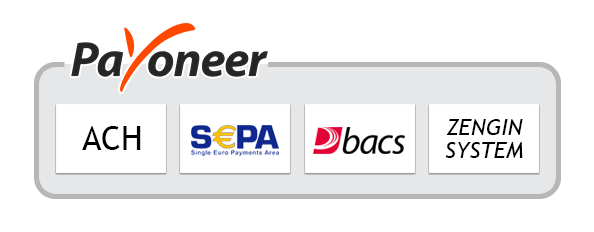Table of Contents
Overview
New York, NY – February 27, 2025 – The Trans-2,6-Dimethylmorpholine (TDM) Market is witnessing a significant growth trajectory, expected to surge from USD 79.2 million in 2024 to approximately USD 126.1 million by 2034, at a CAGR of 4.8%.
This chemical compound is pivotal in several industries, particularly pharmaceuticals, where it functions as a key enantiomer in drug formulation and synthesis, enhancing drug design efficacy by targeting specific pharmaceutical processes. Its widespread application stems from its structural properties such as stability, solubility, and reactivity, essential for complex organic compound synthesis.
Predominantly used in the pharmaceutical sector, which held a 92.8% market share in 2024, TDM is integral in creating drugs for neurological disorders among other conditions. Its pivotal role in enhancing the bioavailability and effectiveness of pharmaceuticals underscores its importance. Furthermore, driven by increasing pharmaceutical demands and innovations in drug development, the TDM market experiences steady growth. The chemical’s versatility allows significant application in other sectors too, including agrochemicals and material science, underlining its overall market significance.

Key Takeaways
- The global Trans-2,6-Dimethylmorpholine market was valued at USD 79.2 Million in 2024.
- The global Trans-2,6-Dimethylmorpholine market is projected to grow at a CAGR of 12.8% and is estimated to reach USD 126.1 Million by 2034.
- Among purities, up to 97% accounted for the largest market share at 73.2%.
- Among applications, pharmaceuticals accounted for the majority of the market share at 92.8%.
- North America is estimated as the largest market for Trans-2,6-Dimethylmorpholine with a share of 38.1% of the market share.
- Asia-Pacific is anticipated to register the highest CAGR of 5.3%.
- Europe with a revenue share of 36.2% in 2024 and expected to register a CAGR of 4.9%.
➤ For a deeper understanding, click on the sample report link: https://market.us/report/trans-26-dimethylmorpholine-market/request-sample/
Report Scope
| Market Value (2024) | USD 79.2 Million |
| Forecast Revenue (2034) | USD 126.1 Million |
| CAGR (2025-2034) | 4.8% |
| Segments Covered | By Purity (Up to 97% and above 97%), By Application (Pharmaceutical, Agrochemicals, Electronic Chemical, & Material Science) |
| Competitive Landscape | Shandong Mopai Biotechnology Co., Ltd., Henan Tianfu Chemical Co., Ltd., Hairui Chemical, Henan Yufu New Materials Co., Ltd, Shanghai SABO Biochemical Technology Co., Ltd., Acros Pharma, Hunan Huateng Pharmaceutical Co., Ltd., Win-Win Chemical CO., Limited, Accela ChemBio Inc., abcr GmbH, Synthonix, Inc., Hefei TNJ Chemical Industry Co., Ltd., HUNAN Chemfish Pharmaceutical Co., Ltd & Other Key Players |
Experts Review
Government incentives and technological innovations are shaping the TDM market. These include green chemistry initiatives that are reducing environmental impact and align with stringent regulatory frameworks, helping to meet sustainability goals. The investment landscape offers opportunities, bolstered by growing pharmaceutical and agrochemical demands. However, risks like high production costs in compliance with safety standards pose challenges.
Consumer awareness is increasing, driven by the demand for sustainable practices, affecting purchasing decisions. Technological advancements have improved TDM’s production and application processes, supporting market growth. Within the regulatory environment, adherence to stringent standards is crucial for maintaining market access and trust. Overall, TDM’s market trajectory is positive, contingent on innovations, regulatory compliance, and strategic market expansion.
➤ Directly Purchase a copy of the report – https://market.us/purchase-report/?report_id=140857
Key Market Segments
Purity Analysis
- The Trans-2,6-Dimethylmorpholine (TDM) market splits into two key segments: up to 97% purity and above 97% purity. In 2024, the up to 97% purity segment captured a hefty 73.2% of the market’s revenue, driven by its widespread use across industries and its cost-effectiveness. This grade of TDM shines in applications like chemical synthesis, polymer manufacturing, agrochemicals, and coatings—sectors where ultra-high purity isn’t a make-or-break factor. Its dominance stems from the strong demand for producing intermediates for pharmaceuticals, pesticides, and specialty chemicals, making it a go-to choice for manufacturers.
Application Analysis
- The TDM market breaks down into applications like pharmaceuticals, agrochemicals, electronic chemicals, and material science. In 2024, pharmaceuticals claimed a staggering 92.8% market share, highlighting TDM’s vital role in drug development. This chemical serves as a key building block for synthesizing compounds used in treatments, particularly for central nervous system disorders and other complex conditions. Its unique structure makes it a cornerstone in crafting morpholine derivatives, which pop up across a wide array of therapeutic drugs.
Regional Analysis
- In 2024, North America took the lead in the global Trans-2,6-Dimethylmorpholine (TDM) market, commanding a solid 38.1% share. This dominance owes much to the region’s powerhouse pharmaceutical industry and its top-tier chemical manufacturing capabilities. Several factors come together to make North America, especially the United States, a hub for TDM demand and production.
- First off, the region is home to many of the world’s biggest pharmaceutical and biotech companies, all laser-focused on churning out new drugs. This hotbed of innovation creates a constant need for specialized chemical intermediates like TDM, which plays a starring role in synthesizing treatments for complex diseases. The relentless drive to develop cutting-edge therapies keeps TDM in high demand, cementing North America’s grip on the market.
- Beyond that, the region’s advanced industrial setup and technological edge make it a standout in producing high-quality TDM. With state-of-the-art chemical processing tools and a knack for precision, North America churns out TDM that meets rigorous standards. This production strength not only satisfies the needs of its pharmaceutical sector but also fuels exports to markets worldwide, boosting its global market share.
- A strong regulatory framework adds another layer of advantage. Strict safety and environmental rules ensure that TDM production stays top-notch, building trust in the region’s chemical output. This reliability draws more investment into the sector, further locking in North America’s leading position. Plus, hefty funding—both public and private—pours into healthcare and pharmaceutical R&D, keeping TDM usage on an upward trajectory. The region’s deep pockets and dedication to advancing healthcare solutions support both the demand for TDM and the ability to invest in the high-tech processes needed to produce it.
Top Use Cases
- The solvent in Chemical Synthesis: Trans-2,6-Dimethylmorpholine is used as a solvent in various chemical synthesis processes, especially for organic compounds. Its ability to dissolve both polar and non-polar substances makes it valuable in labs and industrial applications for reactions requiring a medium that maintains stability at different temperatures.
- Catalyst in Polymerization: In polymer chemistry, Trans-2,6-Dimethylmorpholine acts as a catalyst in the polymerization of certain monomers. Its high basicity and low volatility help improve reaction efficiency, ensuring better control over the polymerization process, which is crucial for producing high-quality, durable polymers.
- Pharmaceutical Intermediate: Trans-2,6-Dimethylmorpholine serves as an intermediate in pharmaceutical manufacturing, especially in the synthesis of various alkaloids. Its unique chemical structure aids in the production of active pharmaceutical ingredients (APIs) by facilitating efficient reactions that lead to the desired compounds used in drug formulations.
- Corrosion Inhibitor: In industrial settings, Trans-2,6-Dimethylmorpholine is employed as a corrosion inhibitor in water treatment systems. Its ability to bind with metal surfaces and form protective layers helps prevent the degradation of pipes, tanks, and other equipment exposed to corrosive environments.
- Enhancing Solubility in Agrochemicals: Trans-2,6-Dimethylmorpholine is used in the formulation of agrochemicals, such as herbicides and pesticides, to enhance the solubility and stability of active ingredients. This improves the effectiveness of these products by ensuring better absorption and spreading when applied to crops.
Recent Developments
1. Shandong Mopai Biotechnology Co. Ltd.
- Focus: Likely involved in the production and innovation of specialty chemicals, including morpholine derivatives.
- Recent Developments:
- Check for investments in R&D or new production facilities.
- Look for partnerships with pharmaceutical or agrochemical companies.
- Contribution to Trans-2,6-Dimethylmorpholine:
- Potential advancements in synthesis methods or scaling up production.
2. Henan Tianfu Chemical Co., Ltd.
- Focus: A major player in the chemical manufacturing sector, possibly producing intermediates like Trans-2,6-Dimethylmorpholine.
- Recent Developments:
- Search for acquisitions of smaller chemical firms or partnerships with global distributors.
- Look for innovations in green chemistry or sustainable production methods.
- Contribution to Trans-2,6-Dimethylmorpholine:
- Potential improvements in yield, purity, or cost-effectiveness.
3. Hairui Chemical
- Focus: Known for supplying high-quality chemical intermediates, including morpholine derivatives.
- Recent Developments:
- Check for expansions in their product portfolio or new certifications.
- Look for collaborations with academic institutions or research organizations.
- Contribution to Trans-2,6-Dimethylmorpholine:
- Potential development of novel applications in pharmaceuticals or agrochemicals.
4. Henan Yufu New Materials Co. Ltd
- Focus: Specializes in new materials and chemical intermediates, possibly including morpholine derivatives.
- Recent Developments:
- Search for investments in advanced manufacturing technologies.
- Look for partnerships with downstream industries (e.g., coatings, adhesives).
- Contribution to Trans-2,6-Dimethylmorpholine:
- Potential innovations in application-specific formulations.
5. Shanghai SABO Biochemical Technology Co. Ltd.
- Focus: Likely involved in biochemical research and production, including specialty chemicals.
- Recent Developments:
- Check for new product launches or expansions into international markets.
- Look for collaborations with biotech or pharmaceutical companies.
- Contribution to Trans-2,6-Dimethylmorpholine:
- Potential advancements in biocatalysis or enzymatic synthesis methods.
Conclusion
Trans-2,6-Dimethylmorpholine plays a crucial role across various industries due to its versatile chemical properties. From acting as a solvent and catalyst in chemical reactions to serving as an intermediate in pharmaceutical production, its demand is expected to grow as industries continue to focus on optimizing processes. Its application in corrosion inhibition further highlights its importance in industrial maintenance and material longevity. As industries evolve and require more specialized chemical compounds, Trans-2,6-Dimethylmorpholine is positioned to remain a key player in multiple sectors, with a promising market outlook.
Discuss Your Needs With Our Analyst
Please share your requirements with more details so our analyst can check if they can solve your problem(s)





